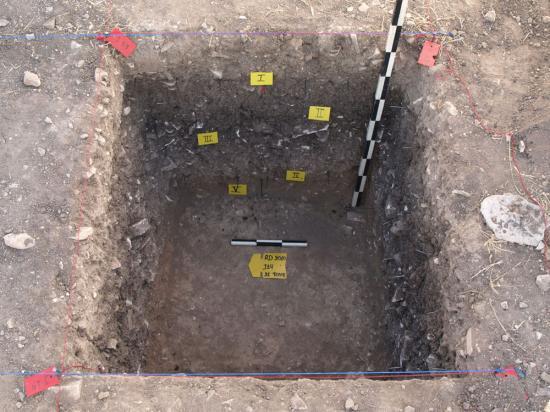|
Source
http://www.moi.g -ov.cy/moi/pio/pio.nsf/All/9FDA5BE2E10E71E5C22578550049C34C?OpenDocument
The Ministry of Communications and Works, Department of Antiquities, announces the completion of the 2010 field season conducted by the Department of History and Archaeology of the Aristotle University of Thessaloniki (AUT) at the important pre-Neolithic site of ‘Rhoudias’, situated in the south foothills of the Troodos Mountains (Pafos District). The project is carried out under the direction of Professor Nikolaos Efstratiou. The short field season took place at the end of November and the work was conducted by a small group comprised of postgraduate students of the AUT and of Cypriot archaeologists and researchers.
This year’s aims concerned the understanding of the geomorphology of the Xeros River terrace on which the site is situated. Also the area’s environmental dynamics were explored, which must have greatly affected the decisions made by the hunter-gatherer groups who seem to have visited this area frequently throughout the island’s early prehistory (10.000 – 6.000 B.C.) as testified by the lithics’ typology.

The geoarchaeological investigation conducted at the site confirmed the initial observations on the site’s stratigraphy concerning the relation between the presence of tools and the existence of clearly defined depositional episodes (e.g. palaeosols) which then led to the identification of paleosurfaces and consequently to the reconstruction of the site’s paleoenvironmental history.
The finds, mostly lithic tools dating to the pre-Neolithic phase of ‘Roudhias’, amount to hundreds, confirming the richness of the material and reinforcing the view that this Pleistocene river terrace in the Troodos mountains, next to the Xeros River, was repeatedly visited by groups of hunter-gatherers who remained at the site for an unknown period each time, and whose trip was part of a route from the coast to the mountains and vice-versa.
The 2010 excavation results are considered to be satisfactory and confirm the pre-Neolithic character of ‘Roudhias’’ initial phase. The Epipalaeolithic character of the lithic tools which belong to this horizon is certain and points towards Cyprus’ only known and dated analogous site of Akrotiri-Aetokremmos. It should however be
stressed that absolute dating from the ‘Roudhias’ site is still pending and is necessary to be dealt with in the immediate future.
In conclusion, the second excavation season at the mountainous site of ‘Roudhias’ confirms the initial assessments of the project coordinators concerning the role that Cyprus’ mountainous hinterland played in the interesting but still fluid processes of the end of the Pleistocene and the beginning of the Holocene, that is shortly before 10,000 B.C. The above are always of course viewed in relation to the wider archaeological picture of the Middle East at the time.
|